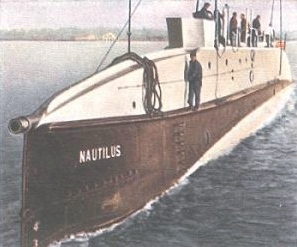Authors:
Historic Era: Era 9: Postwar United States (1945 to early 1970s)
Historic Theme:
Subject:
Spring 2018 | Volume 63, Issue 1


Authors:
Historic Era: Era 9: Postwar United States (1945 to early 1970s)
Historic Theme:
Subject:
Spring 2018 | Volume 63, Issue 1

“If World War III should come, its strategic center will be the North Pole,” declared General Hap Arnold, commander of the U.S. Army Air Forces during the Second World War. But, in the Navy, few officers paid much attention to his warning. As the two superpowers squared off against each other in the 1950s in Korea, Berlin, and other trouble-spots, the vast expanse of the Arctic Ocean remained relatively quiet. Air Force planes patrolled the frozen northern frontier from such distant bases as Thule in Greenland and a few remote radar stations stood guard to detect incoming Soviet bombers. But the Navy largely ignored the vast expanse of ice.
That changed dramatically in 1957. The world was shocked on August 3 when news broke that an American submarine had secretly reached the North Pole underwater. Coming only a few months after the Soviet's stunning success with Sputnik, the feat greatly buoyed the public's spirit. “Few maritime exploits in history have so startled the world as the silent, secret transpolar voyage of the U.S. Navy’s nuclear submarine Nautilus," wrote Paul O'Neil in LIFE Magazine at the time, "and none since the age of Columbus and Vasco de Gama has opened, in one bold stroke, so vast and forbidding an area of the seas."
The following year, the USS Skate would actually break through the ice and surface at the Pole. But these great successes only came after a decade of hard work and extraordinary technological innovations.
For centuries, explorers had discovered mostly tragedy in the Arctic. Henry Hudson died in the frozen sea that was later named for him, and the Franklin, Jeannette, and Greely expeditions all ended in misery and death.
Submarines at the time could go only a little further north than surface ships. In 1930, the Navy sold a World War I-era submarine to a private Arctic expedition led by explorer Sir Hubert Wilkins, who renamed the sub Nautilus, after the vessel in Jules Verne's 20,000 Leagues Under the Sea. But the old boat lacked insulation and heaters, and was ill-equipped to deal with Arctic challenges. Fresh water pipes froze and the hull leaked.
Wilkins and Nautilus reached 82° N, the farthest north any ship had gone under its own power. The expedition’s chief scientist Harold Sverdrup took core samples of the sea bottom, and recorded bathymetric and gravitational data. But